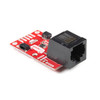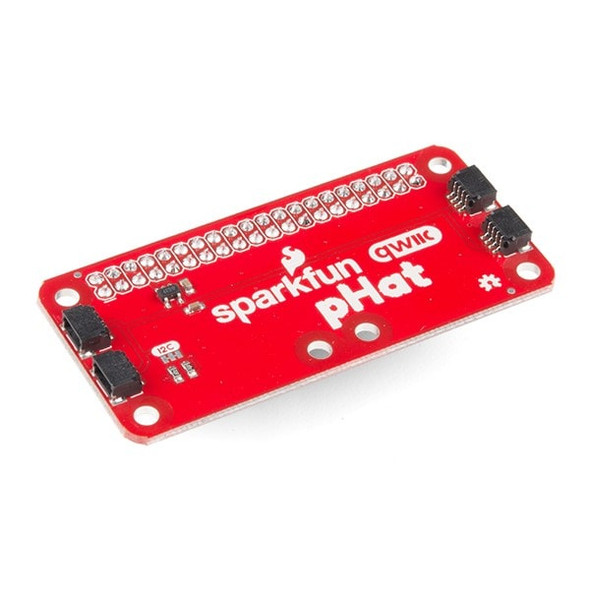Description
QwiicBus EndPoint - Sparkfun COM-16988
The SparkFun QwiicBus EndPoint is the fastest and easiest way to extend the range of your I2C communication bus. The breakout uses NXP’s PCA9615 IC, which converts the two default I2C signals into four differential signals, two for SCL and two for SDA. The differential signals are sent over an Ethernet cable, which attaches to the breakout through the onboard RJ-45 connectors. The differential signaling allows the I2C signals to reach distances of up to 100ft. while still maintaining their signal integrity! To make it even easier to get your readings, all communication is enacted exclusively via I2C, utilizing our handy Qwiic system so no soldering is required to connect it to the rest of your system. However, we still have broken out 0.1"-spaced pins in case you prefer to use a breadboard.
The simplicity of the QwiicBus EndPoint is one of its biggest appeals. Other I2C communication methods require packetizing I2C communication into another protocol, be it RS-485 or 1-Wire. However, the PCA9615 keeps the I2C protocol by utilizing a differential transceiver.
This updated version of the Differential I2C Breakout adds two 0.1" spaced pins connected to the unused pair of wires on the RJ-45 connectors so users can easily take advantage of the unused pair for whatever they would like.
Whether you need to extend the range of an I2C sensor on an autonomous vehicle plagued with noise from motors or want to create a vast sensor network in your home or office, the QwiicBus EndPoint is a great solution to extend the distance and reduce noise susceptibility.
QwiicBus Endpoint Features:
- Uses the PCA9615 buffer IC
- I2C Supply voltage range: 2.3-5.5V
- Differential Supply voltage range: 3-5.5V
- Multiple power configurations depending on application needs
- Extends I2C bus up to 100 feet
- 2x Qwiic Connectors
Documents:
- QwiicBus Endpoint Schematic
- QwiicBus Hookup Guide
- PCA9615 (Datasheet)



















